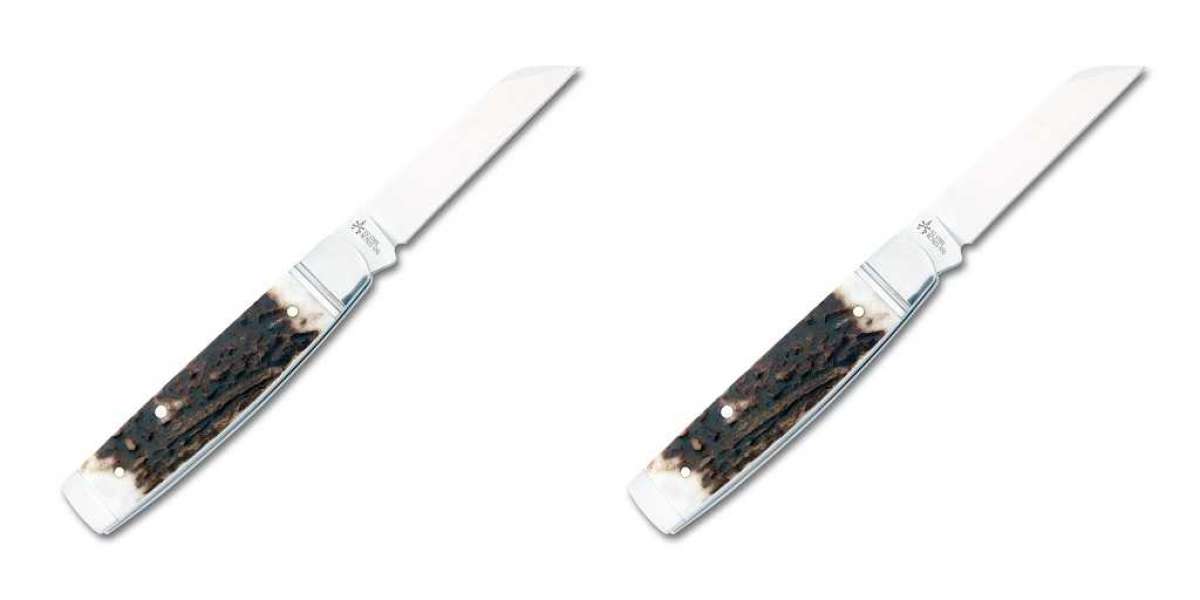Forget the best quality pocket knife brands for a minute, let’s talk about lock types. This more than almost any other feature of a pocket knife (besides perhaps size) will impact how suitable it is for a given use.
So let’s break down the main, common pocket knife lock types here as well as what makes them good (and not so good).
Lock Back (AKA Back Lock)
In a lock back (also known as a back lock) the blade is held closed under tension from a spring; opening the knife compresses the spring, which locks into a bar at the back of the knife blade once it has been opened far enough. To close a lock back, you need to compress the bar (somewhere along the back of the handle) to release the spring.
Lock backs are basic and very affordable, but they are also among the strongest folding knife lock types. Advantages include strength, ease of use, and that you can close the knife without putting your fingers in the way of the blade; one of the main disadvantages is that you need two hands to close the knife.
Liner Locks
In a liner lock, one side of the liner is held under tension when the knife is closed. When the blade is opened, the liner springs inward and fits into a recess at the base of the blade.
The design of a liner lock is extremely simple; they are easy to open and close with one hand, and very intuitive. However, liner locks are not very strong, and require you to put your fingers in the way of the blade when closing. They can also disengage unintentionally when twisting the knife.
Frame Locks
A frame lock works exactly the same as a liner lock except the lock bar itself is integral with the frame of the knife rather than being a part of the liner. Consequently, all the strengths and weaknesses between a frame lock and a liner lock are shared, with the one exception that frame locks tend to be more robust in design and therefore slightly stronger than liner locks.
Button Lock
Not all button locks work exactly the same way with respect to internals, but as for user operation, they all work like this: the blade is either locked closed or held closed under tension from a detent; when it is opened, an internal mechanism locks the blade into place. To disengage a button lock, you depress a button on one side of the knife (usually the left side).
Button locks tend to be stronger than liner and frame locks, and they are also safer to use as they don’t require a user to put his fingers in the path of the blade when closing. They are also easier to operate with one hand than most other lock types.
Bar Lock (AKA AXIS Lock)
Bar locks, also called AXIS locks after Benchmade’s nomenclature, since Benchmade developed them, consist of a sliding bar set into the knife handle that moves back and forth. In the forward position, the blade is either held closed or opened; moved rearwards, the bar allows the blade to swing freely.
Bar locks have many advantages and pretty much no disadvantages. They are intuitive to operate with one hand, and they are probably the best quality pocket knife lock out there, bar none. They are almost definitely the strongest, and they also keep a user’s hands out of the path of the blade when closing.
Explore the Best Quality Pocket Knife Models Out There
If you decide to carry a pocket knife, the lock mechanism is only one thing you should consider. Other determining features of pocket knives include handle materials, blade shape and steel, edge retention, corrosion resistance, carry options and of course, price point. To learn more, visit White Mountain Knives. They carry a wide range of the most popular everyday carry pocket knives in the industry, with the top brands well-represented - and you’ll have plenty of options in terms of what lock type you decide to choose.
For more information about Kershaw Pocket Knife and Victorinox Swiss Army Knife please visit:- White Mountain Knives, LLC














